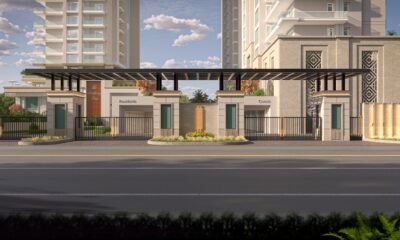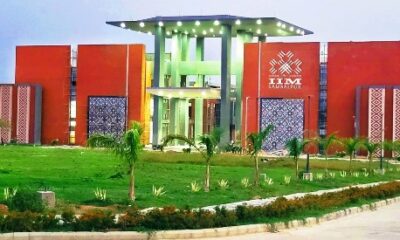Main
Housing for All by 2022 – The Clock is Ticking


Affordable housing is not just about providing homes to the lower-income strata of society, though that is what the Modi government’s avowed intention behind the ‘Housing for All by 2022’ doubtlessly is. Affordable housing creation also has a direct and favourable correlation with the nation’s economy, as well as most other real estate segments. Housing for lower-income wage earners increases the economic strength of any city or region, as it attracts inward migration which creates a bigger manpower pool.
This, in turn, boosts the viability of opening up industries and businesses in the region, translating into more demand for commercial real estate spaces. Formal and informal retail is also attracted to residential catchments, translating into consummate demand for retail spaces in and around such catchments. Finally, affordable housing in India coexists quite benevolently and beneficially with mid-income housing, as the middle class invariably depends on the services of lower-income earners to keep its show going, so to speak.
In cities like Mumbai, lower-income housing existing alongside the super-expensive abodes of ultra-HNIs is also not considered an anomaly. The fairly recent trend of ‘gated communities’ perhaps seeks, to some extent, to reserve the properties within its perimeters to a certain level of networth families – but even in such projects, we see low-cost housing sprouting up almost as a logical consequence all around them.
The critical importance of affordable homes is doubtlessly an immutable truth in any country and its economy. In India, affordable housing has definitely played this role and will continue to do so. However, there has in the past also been a more sordid side to the story. While there were also reputed national players active in this segment, affordable housing in India has historically been the playing ground of smaller, non-established developers who did not follow any particular rule book.
Their modus operandi was to buy small land parcels on the outskirts of cities and in gram panchayat areas, and build very basic housing projects bereft of any but the most rudimentary facilities and amenities. The plots they favoured were invariably in areas which, because they fell outside municipal limits, did not have proper water and electricity or even road connectivity. Worse, such builders often did not have all regulatory clearances and permissions for their plots and projects.
People bought homes in such projects because the quoted ticket sizes were attractively low – often so low that they would have aroused suspicion with more informed buyers. Such developers banked on the fact that their target clientele was extremely cost-sensitive and usually not up to speed on regulatory matters.
The ‘amnesty schemes’ that the Government rolled out to ‘regularize’ such housing projects for a certain fee justifiably drew ire, as such schemes seemed to encourage the development of illegal housing projects. Without a doubt, many fly-by-night developers benefited from these schemes in the past and even banked on the possible option of resorting to them when the demolition hammer finally loomed over their projects.
The arrival of RERA has put paid to such underhanded activity, and only strong developers in the formal housing sector will prevail even in the affordable segment. This includes well-established local players with good track records for timely completion and quality standards. The breed of fly-by-night operators who looked at affordable housing as a means to make a quick buck will now be driven off the market.
The Government has also rolled out various incentives to boost affordable housing. To begin with, the GOI designated this vital sector as a favoured segment under its Housing for All by 2022 initiative. This led to affordable housing graduating from being the poor second cousin of Indian real estate to a highly influential sector. The most recent Union Budget provided direct tax relaxation to the lowest income earners, along with much-needed clarity on the designated beneficiaries under the Pradhan Mantri Awas Yojana (PMAY).
The Government also brought in a new Credit Linked Subsidy Scheme (CLSS) for the middle-income group, with a provision of INR 1,000 crore. Additionally, the extension of tenure for loans under the CLSS of Pradhan Mantri Awas Yojana (PMAY) was increased from 15 to 20 years. Finally, affordable housing has also been accorded the very important infrastructure status, ensuring that developers in this segment have access to cheaper loans and various other incentives to encourage them to pitch in and drive supply.
Having emerged as a preferred segment for housing finance institutes, affordable housing is now also attracting the interest of more developers who had previously shunned it because of its ‘down-market’ image. Today, affordable housing has become a respectable segment and the Government’s determined push towards creating it across the country in sufficient numbers, it now plays a very important role in the housing finance sector.
That said, whether the Government’s vision for Housing for All by 2022 is realistic and implementable to its intended extent is still a big question mark. Definitely, it seems impossible if enough land is not released for the creation of affordable housing. Various Government agencies such as the Indian Railways do, in fact, hold sizeable land parcels which could logically be deployed for this purpose.
Land is a very price-sensitive commodity, and its current shortage in major city-centric areas prevents the development of affordable housing in areas where it is most direly needed. The cost of land currently accounts for as much as 30-50% of the cost of a project within city limits. However, RBI regulations do not allow banks to fund land purchase. Developers, therefore, are left with only a few options. They can either form a joint venture (JV) with the land owner, or get funded through NBFCs – usually a very expensive route, which again precludes the prospect of developing affordable housing on the acquired land.
This is not the only area that needs to be looked at seriously. The lower-income groups also need access to housing loans to a much greater extent that the PMAY scheme offers. In the first place, awareness about this scheme among those whom it intends to benefit is seriously lacking. Also, the tedious KYC norms need to be relaxed for low-income, informal sector buyer who has the most pressing need for housing.
Above everything else, the obvious need of the hour to unravel the Gordian knot of complexity surrounding affordable housing in India is concentrated political will.
Going by its existing track record, the current Government is definitely capable of making the required push – and with Government-held land being matter of public record, of deploying the necessary land resources. The demonetization move and rolling out of RERA and GST are ready examples of a degree of political will which has, in many respects, not been evidenced in India before.
Will we see the Government make yet another series of determined moves to fulfil its vision to put a roof over the head of every Indian citizen? Only time will tell – but if we take the ‘2022’ in its Housing for All vision as any kind of deadline, the clock is definitely ticking.
-



 Interviews4 weeks ago
Interviews4 weeks agoHigh Rental Yield, Price Appreciation, Stable Growth, Make Sydney an Ideal Realty Investment Option: Haansal Estate
-



 News3 weeks ago
News3 weeks agoManasum Senior Living Launches IKIGAI GOA, A Senior Living Community in North Goa, in collaboration with Prescon Homes
-



 News2 weeks ago
News2 weeks agoKW Delhi 6 Mall Onboards New Brands
-



 News1 week ago
News1 week agoGodrej Properties Sells Rs 3k cr+ Homes of Godrej Zenith, Gurugram, within 3 days
-



 News3 weeks ago
News3 weeks agoBridging India Divide: Top 5 Tier- 2 Cities to Focus On
-



 News2 weeks ago
News2 weeks agoCommercial Realty Gets Tech Savvy: Fast Construction, Enhanced Convenience
-



 News3 weeks ago
News3 weeks agoMultipoint Connection – A Definite Boon
-



 News2 weeks ago
News2 weeks agoRBI’s Status Quo on Key Policy Rates to Help Maintain the Real Estate Growth Momentum, Say Industry Stalwarts





























